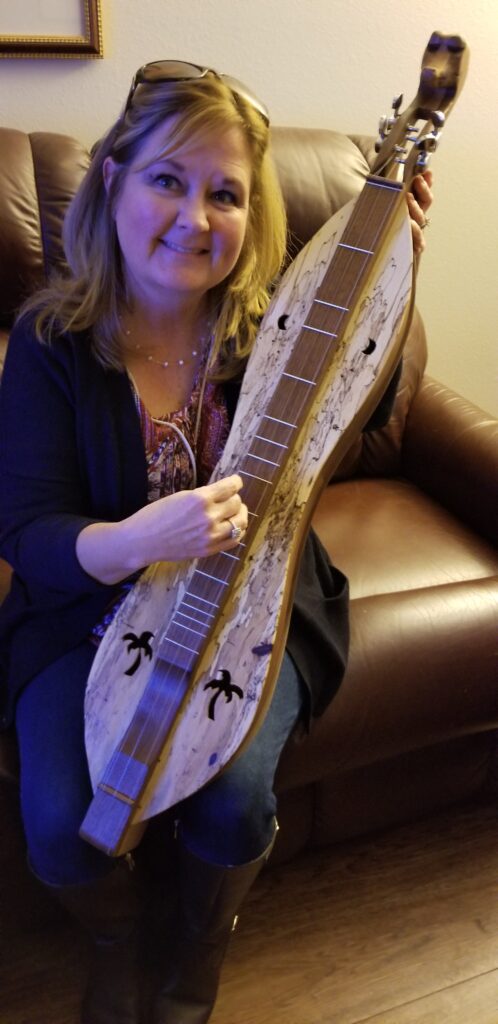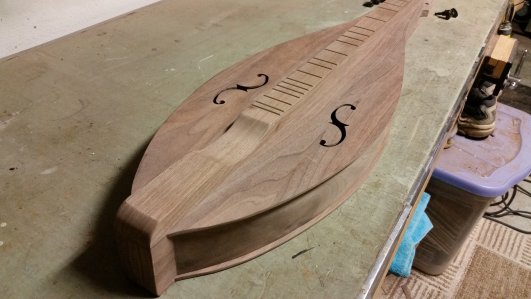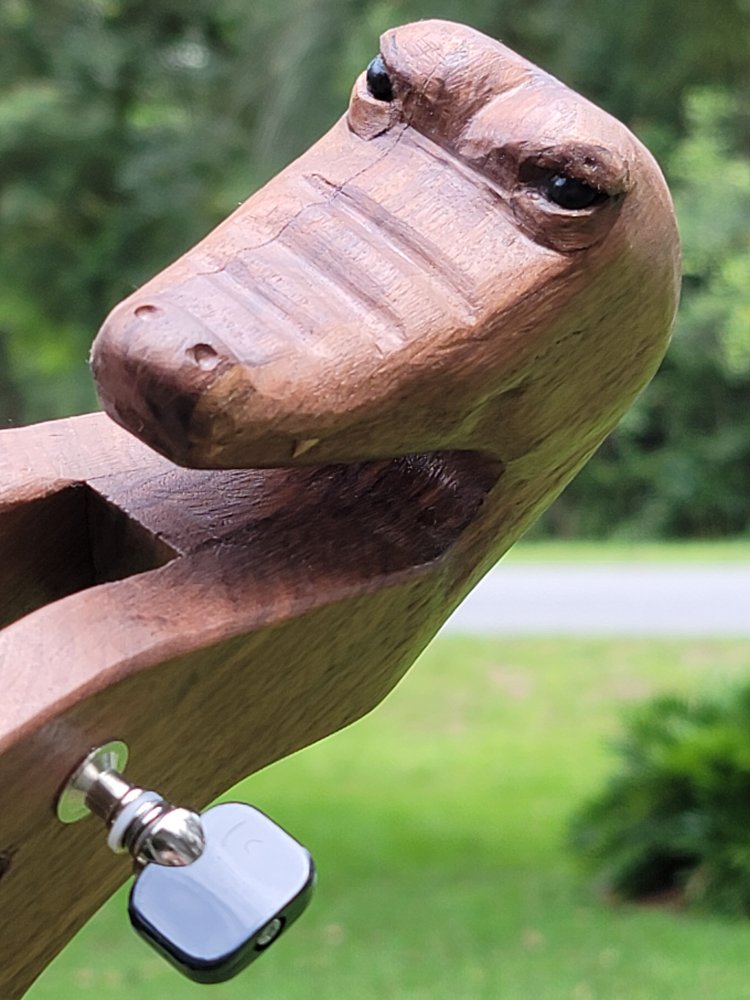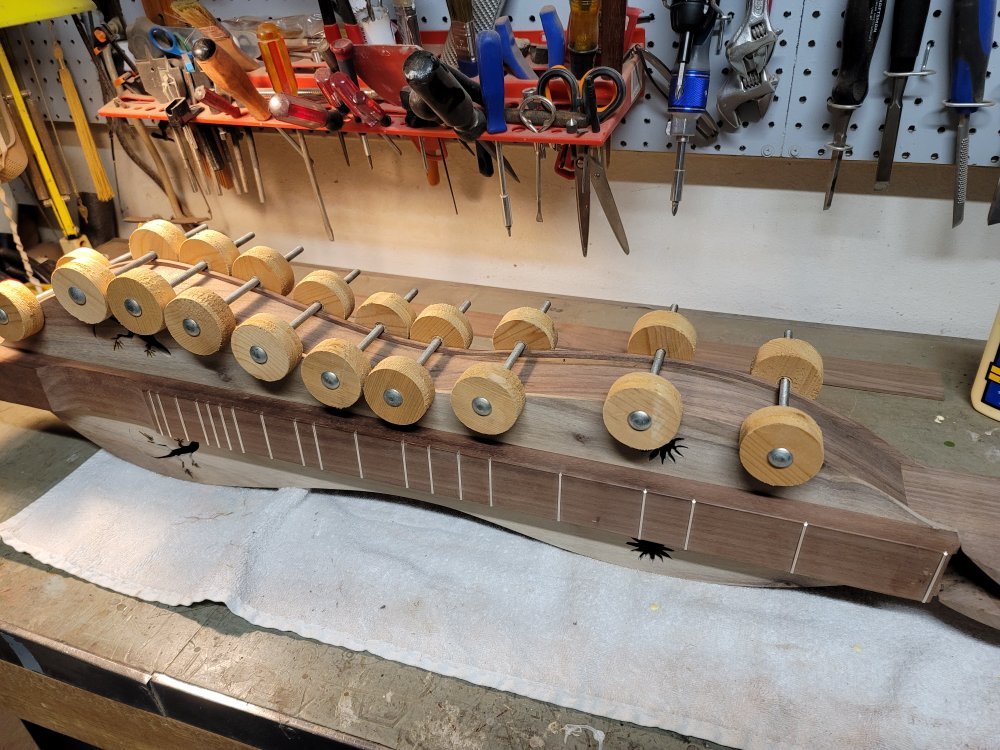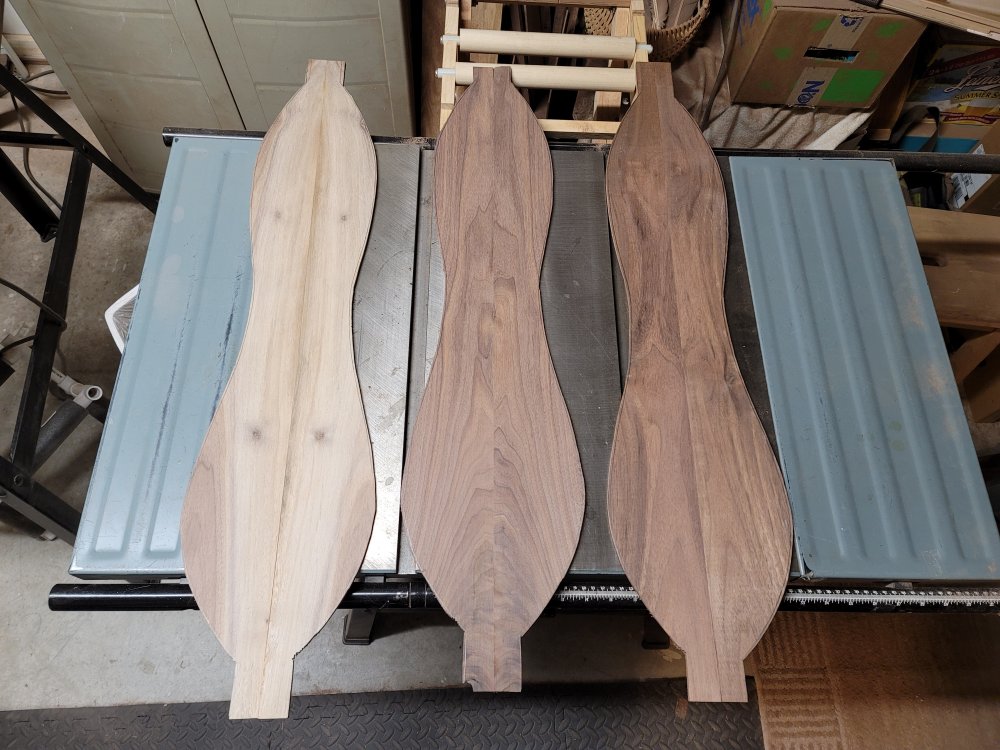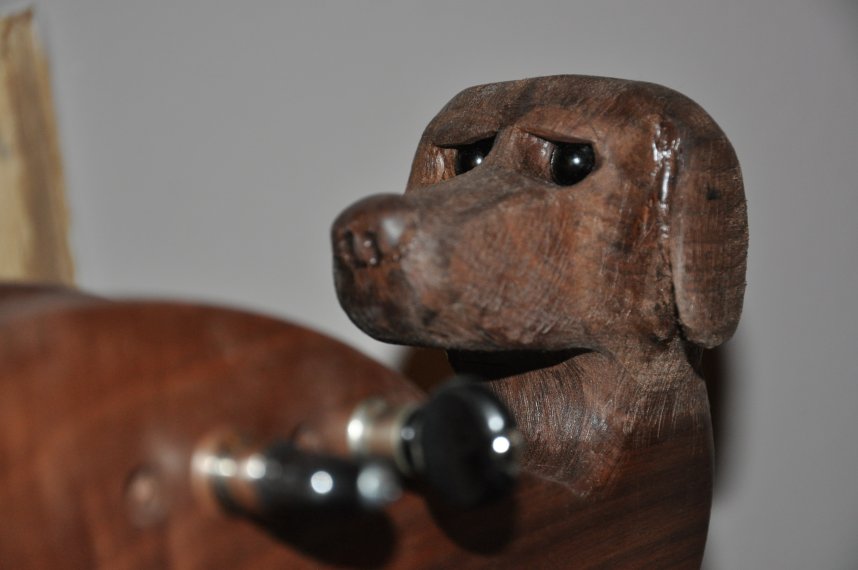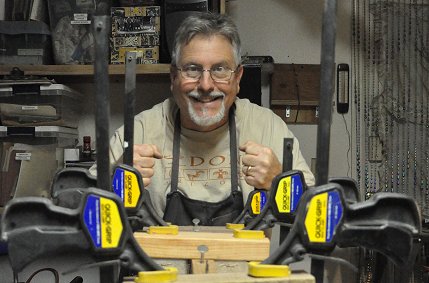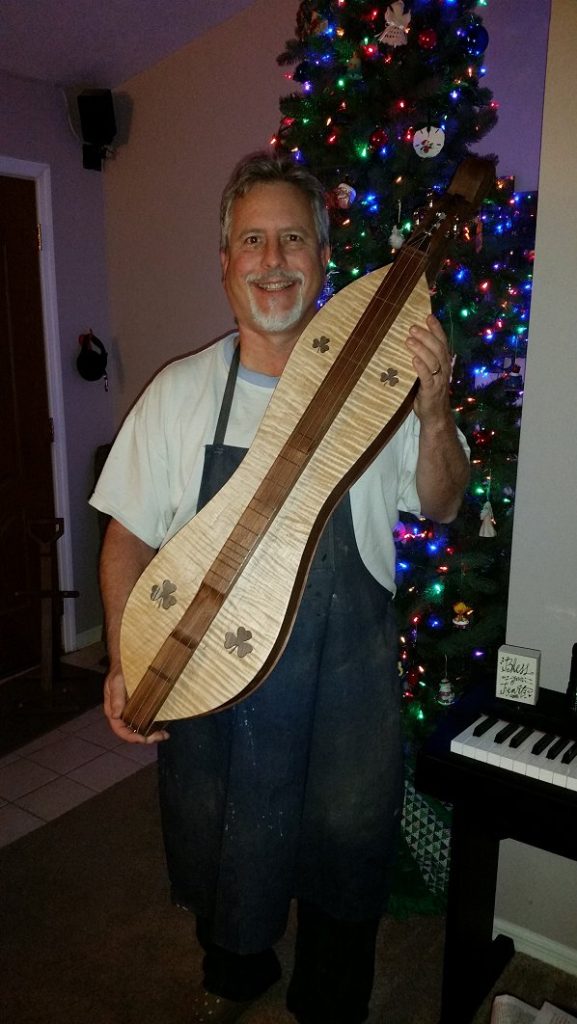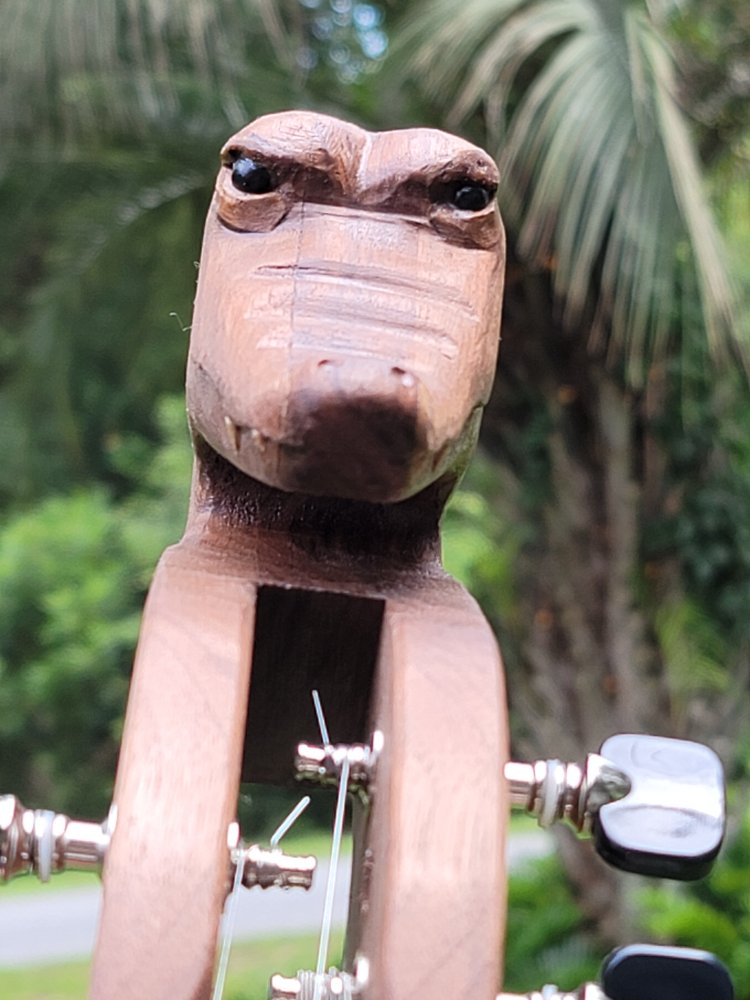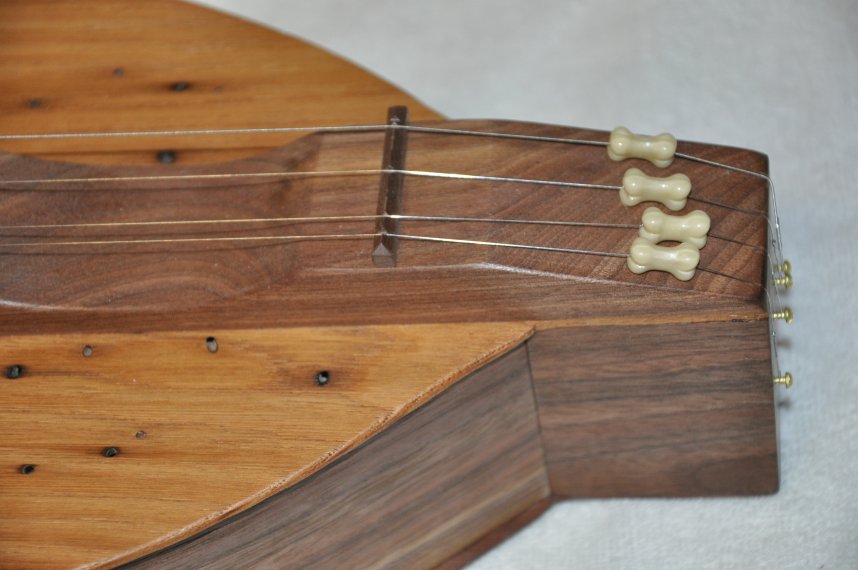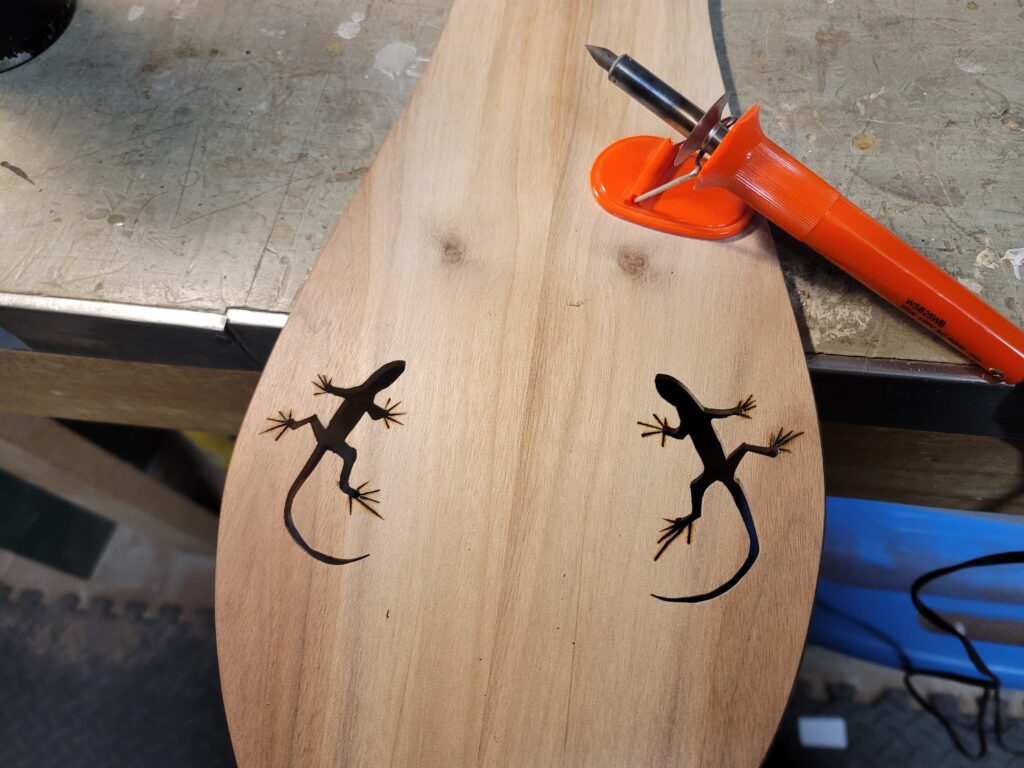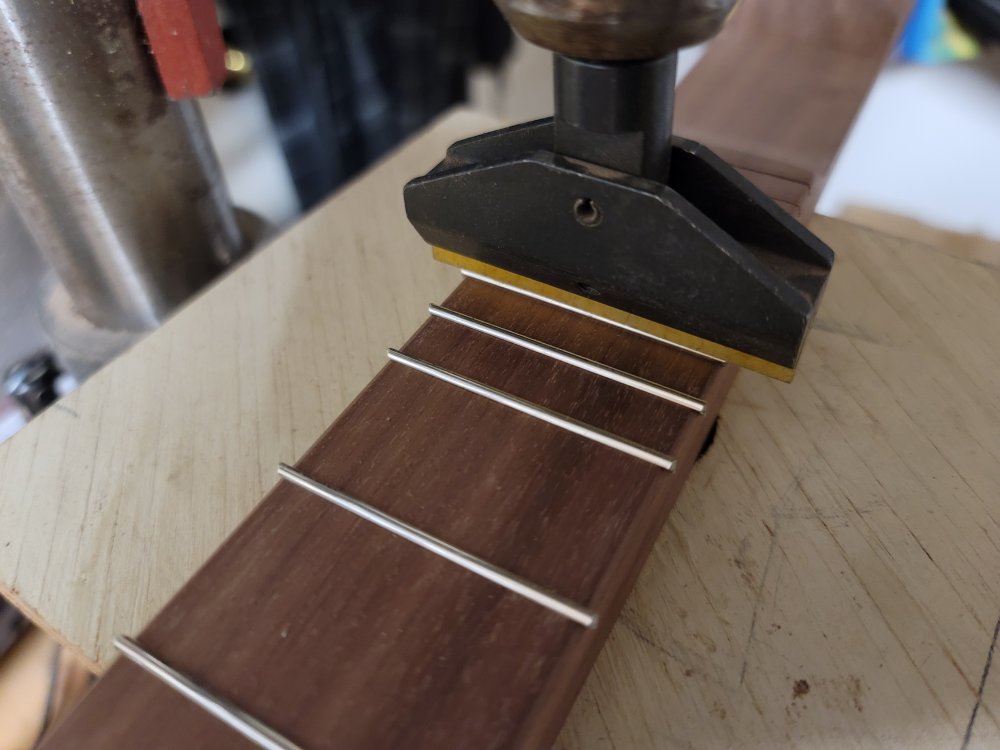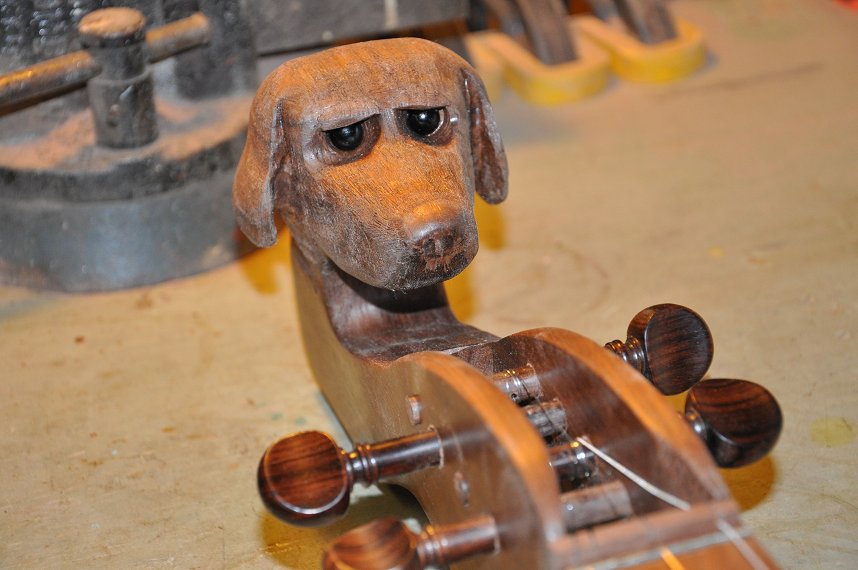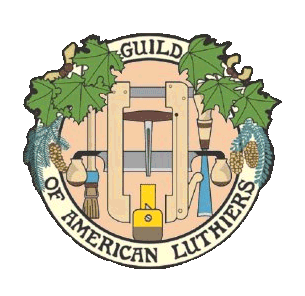Dulcimers #48 and #49 were two instruments I was inspired to create as surprise Christmas gifts for a close family friend and for my wife, and I worked on them at the same time. Our friend, Renitra, was a Gator fan, so I decided to try to carve a gator on the tuning head. For Kim, my wife, I was going to build a bass. Both of her offspring, Kevan and Jill, play electric bass, so it just seemed appropriate.
I had no problem surprising Renitra. Since Kim lived with me and had to contend with the sawdust I would sometimes track inside, she knew I was working on a bass, but we never spoke about who it was for.
Therefore, there was no reason to feature a “What’s on the Bench” Blog post, so I took very few pictures. I did, of course document the creation of gator head and some beautiful wood I found for the top of the gator dulcimer.
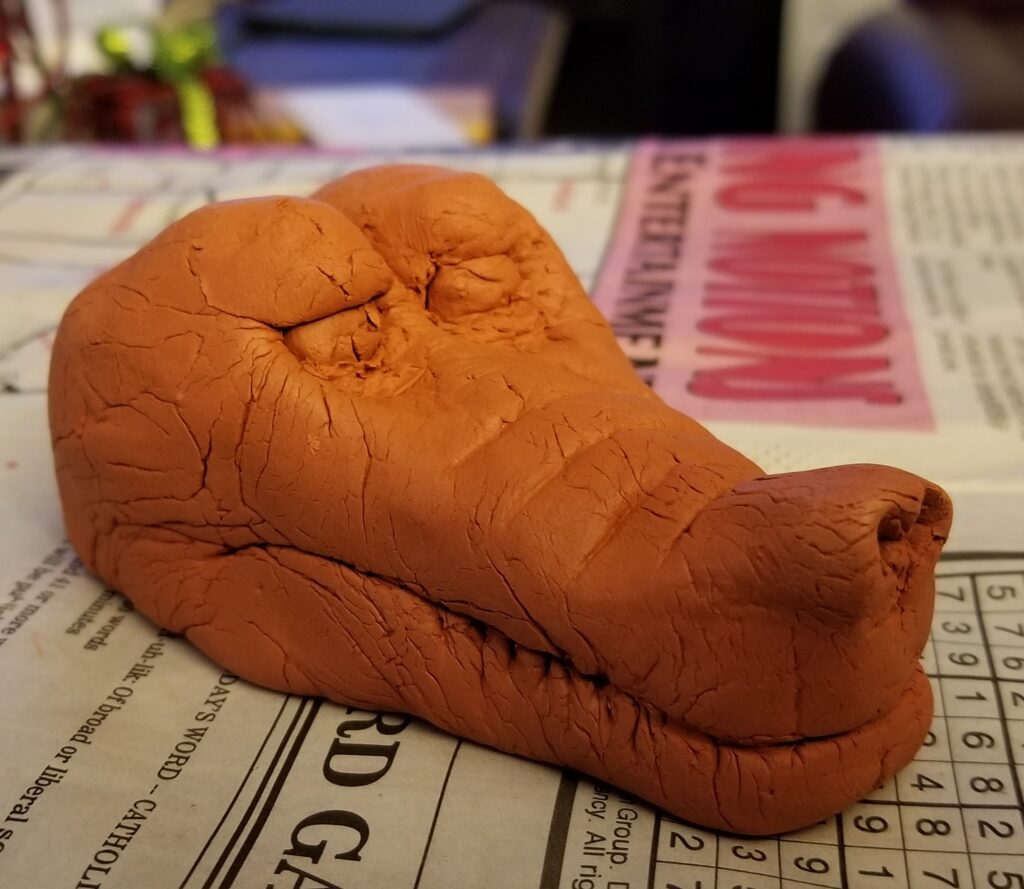
For this instrument, I wanted to find an agreeable shape for the gator, so before I started carving, I experimented with a more forgiving medium. Do I want the eyes close together?
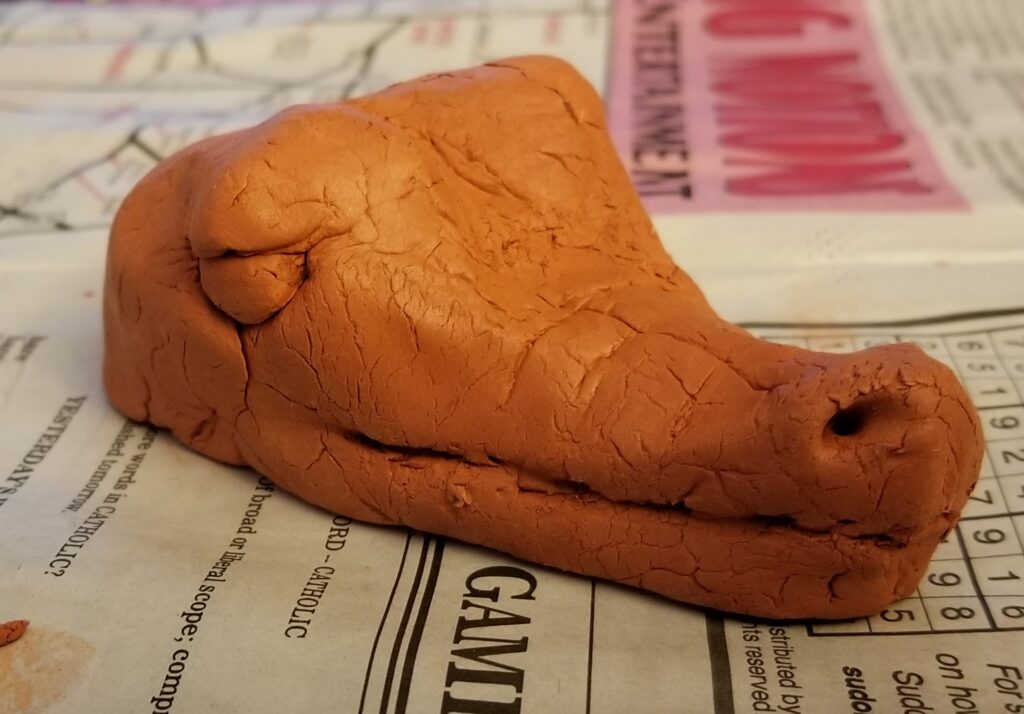
Or, do I want them more on the sides?
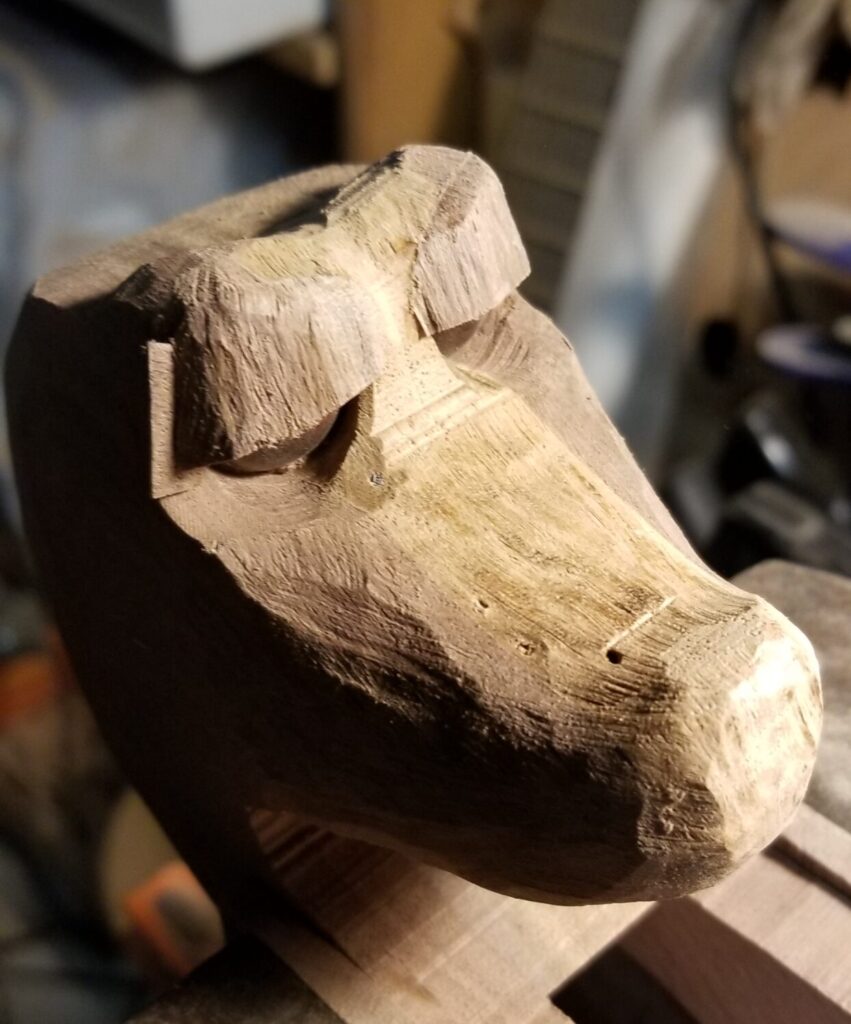
The reality became a balance of the two. Here is the head roughed out with large half-beads for the eyes and chunks of walnut that would eventually be eyelids.
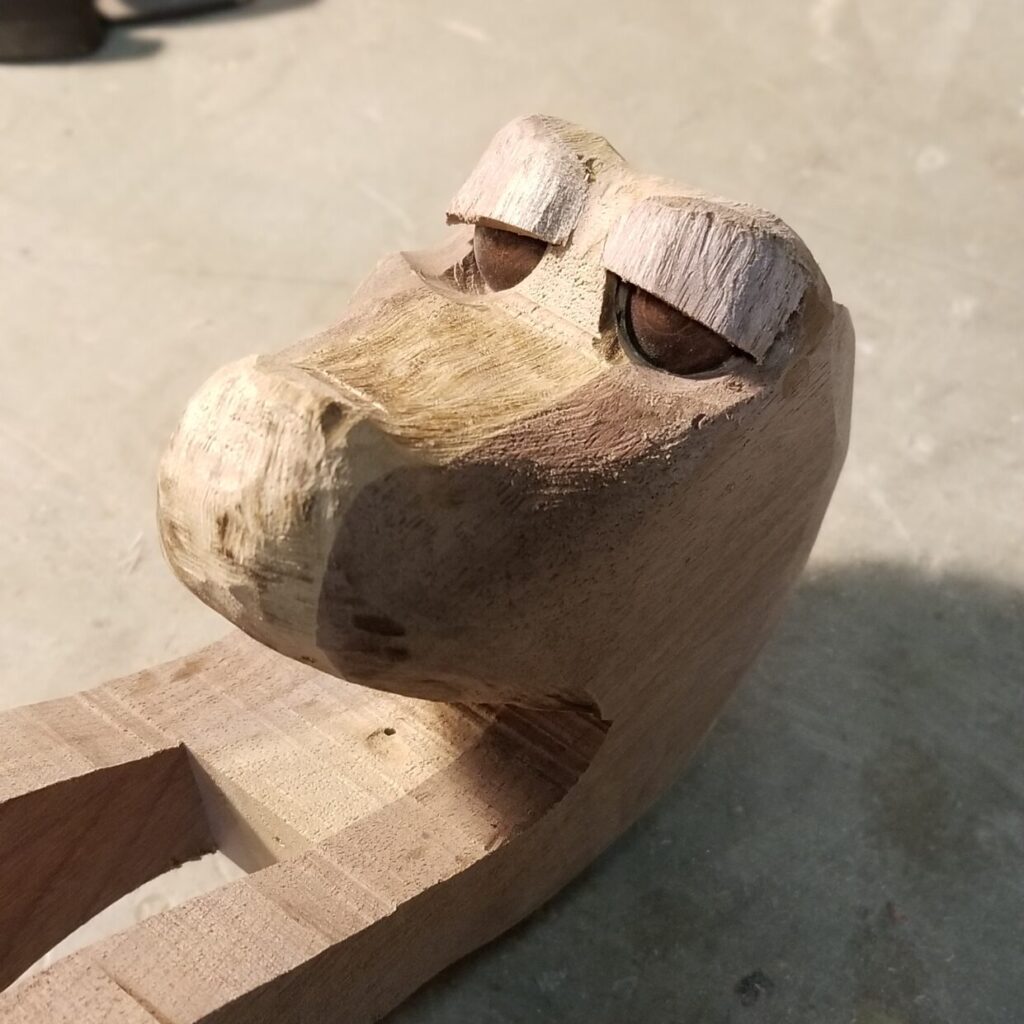
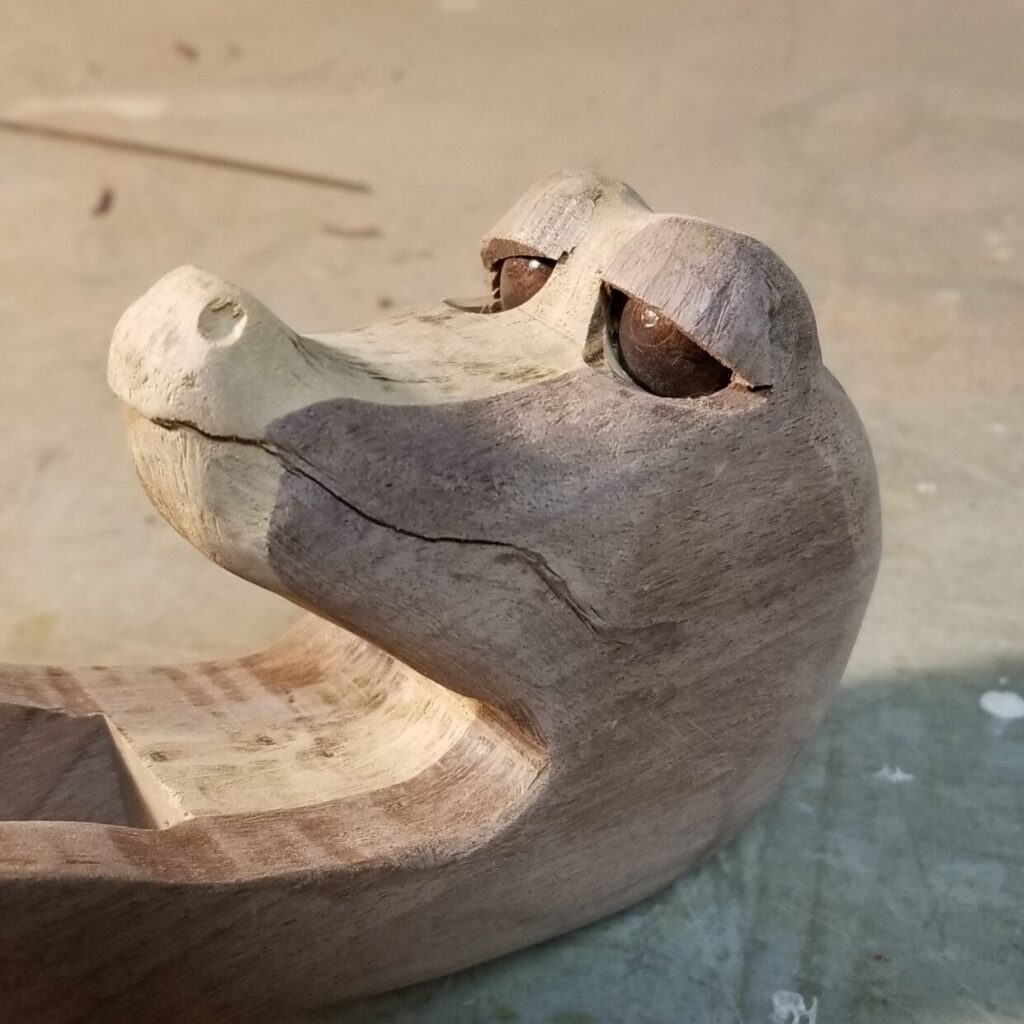
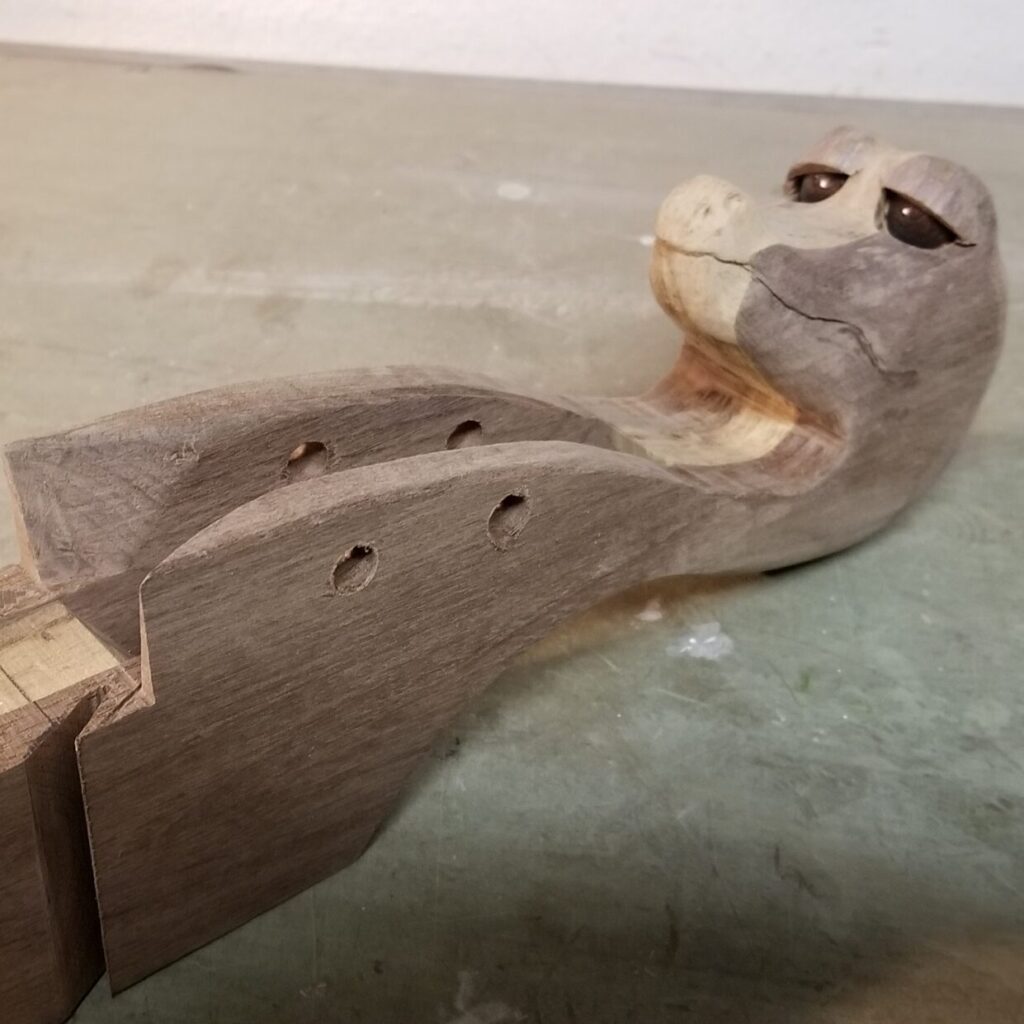
The evolution of a gator. It began to take on the shape that it wanted to. It turned out a little more Disney-esque than I intended, but I like it.
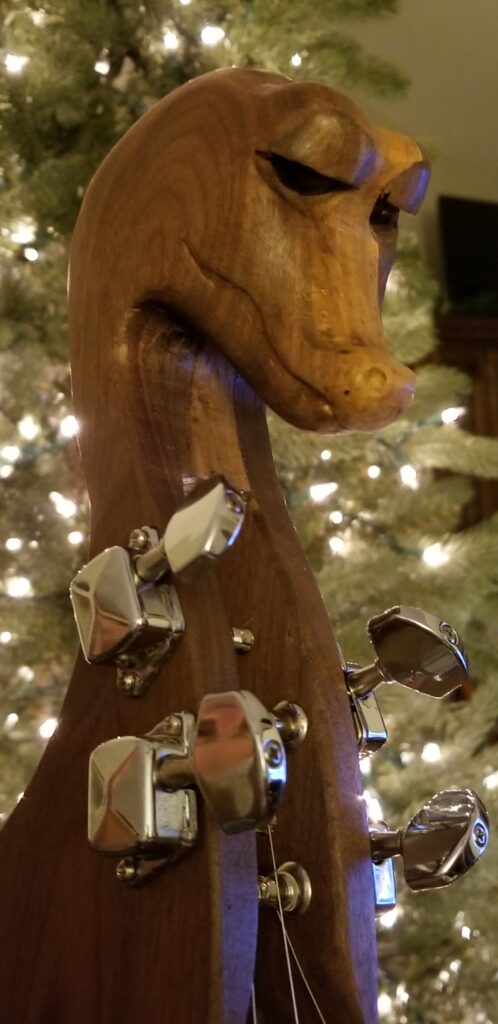
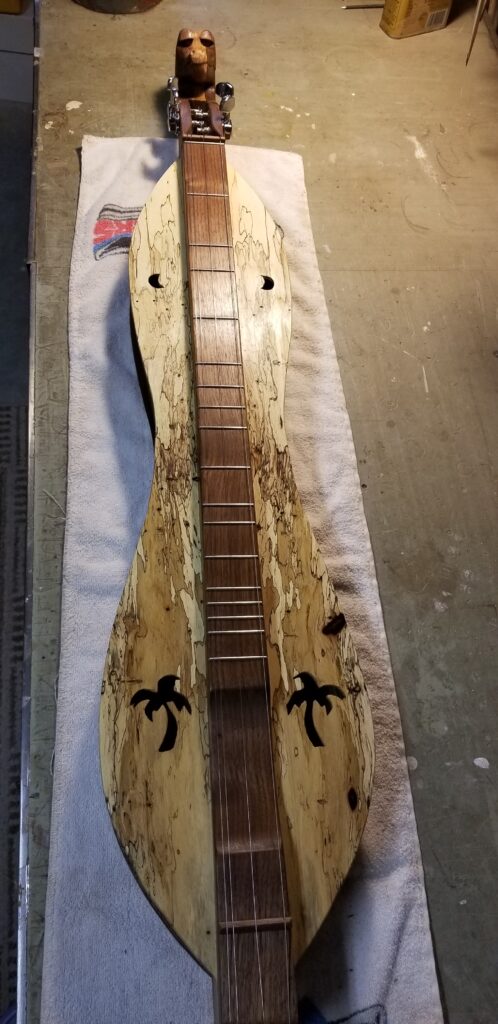
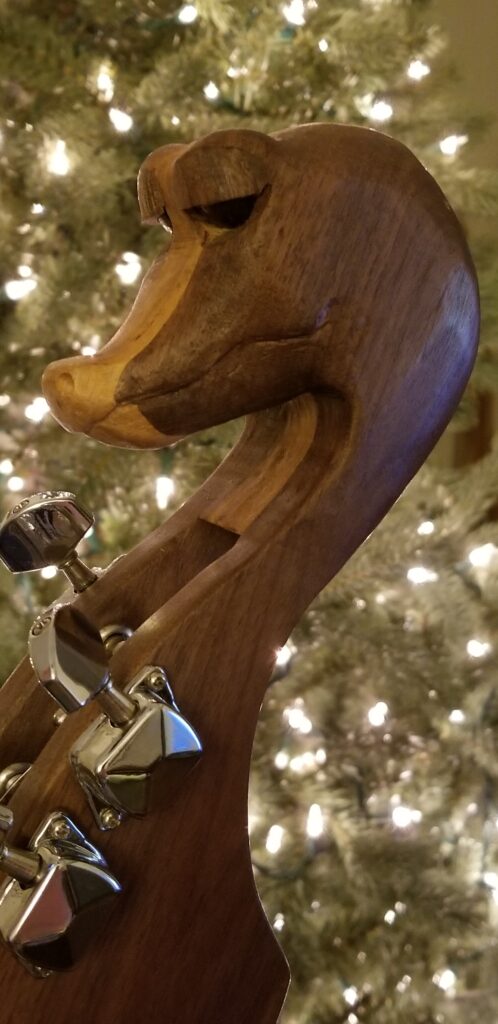
The top soundboard is a piece of Spalted Tamarind. It was the first time I had ever used this, but it finished up nicely.
It took just a little longer to complete the bass for Kim. It, of course was significantly larger than a regular dulcimer, so it has the desired depth of tone.
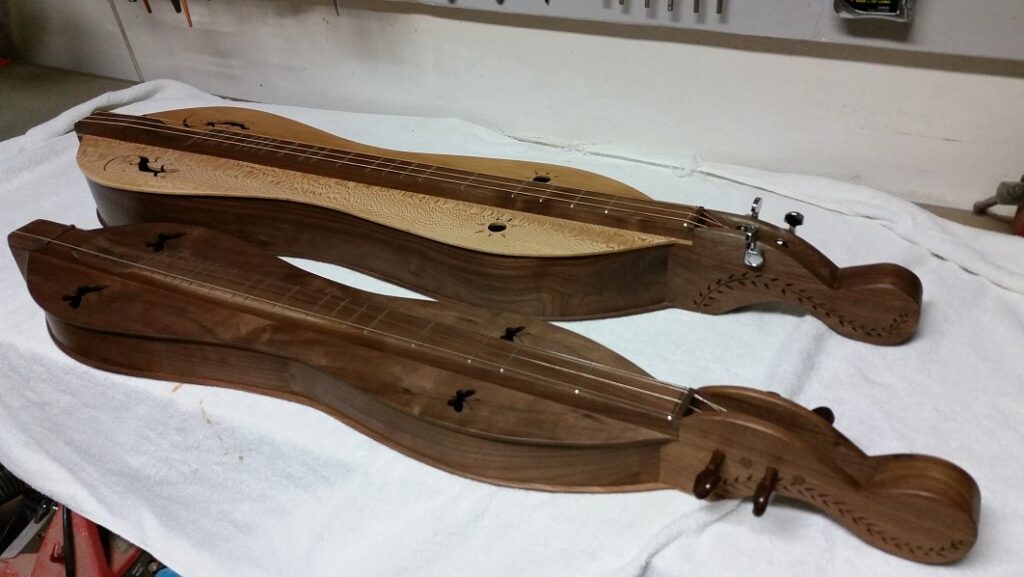
This side-by-side comparison illustrates the size differential.
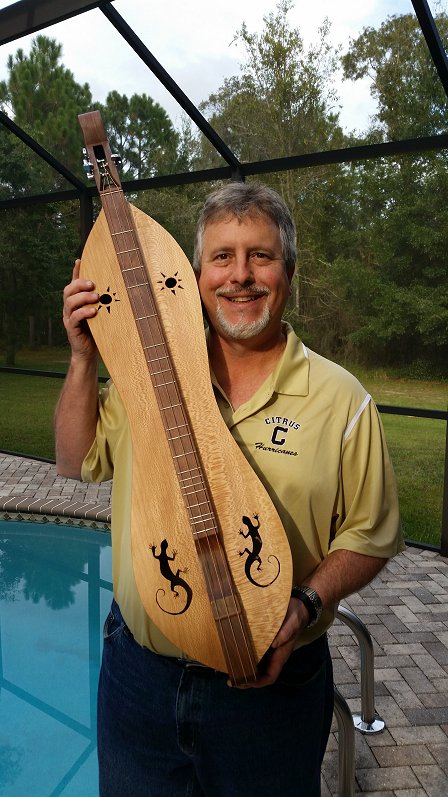
Here is a closeup of the bass. The top is sycamore. The gecko soundholes were designed by nature (and not much fun to cut). Living in Florida, these are everywhere. It was just a matter of snapping a picture of one in the perfect “pose”.
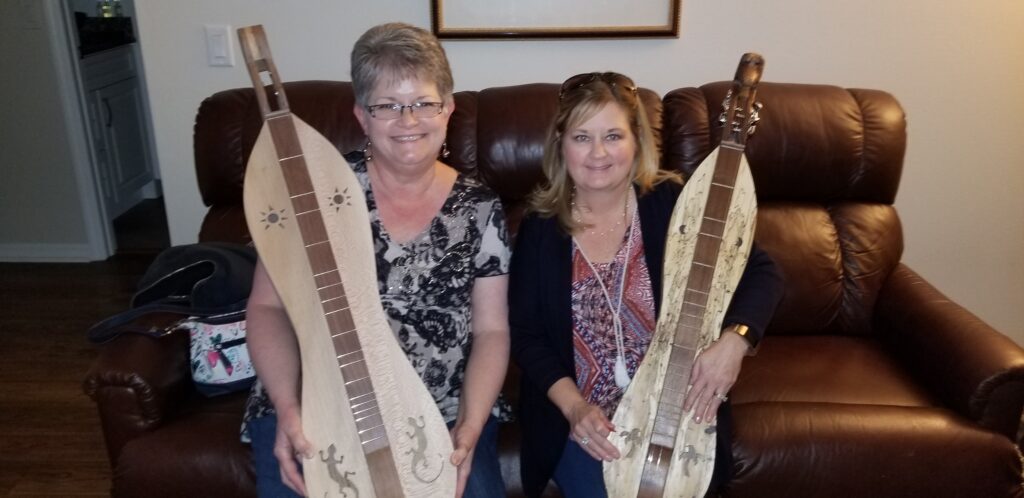
And here is both Kim and Renitra with their respective dulcimers. Merry Christmas, Ladies!

